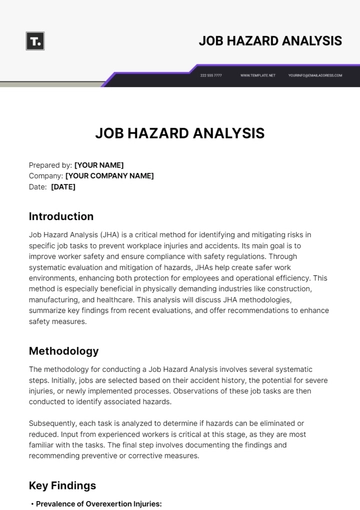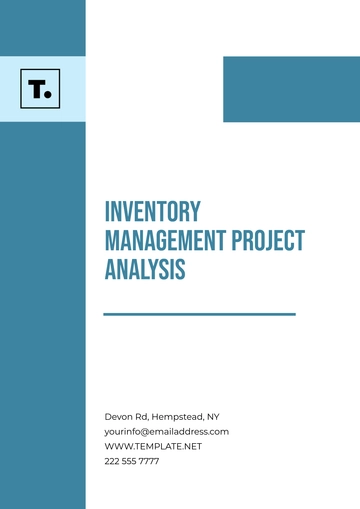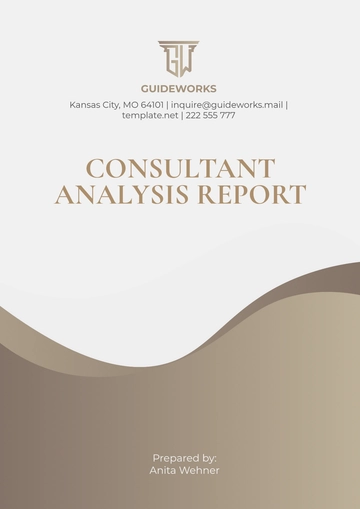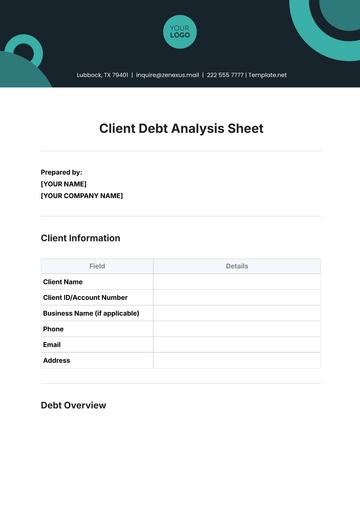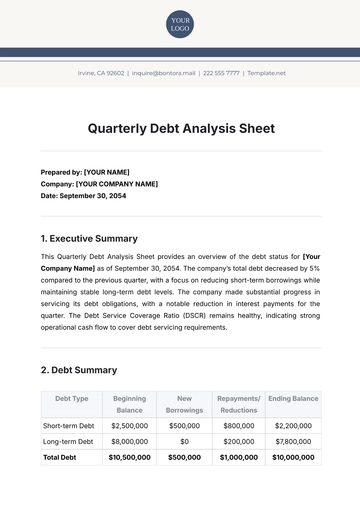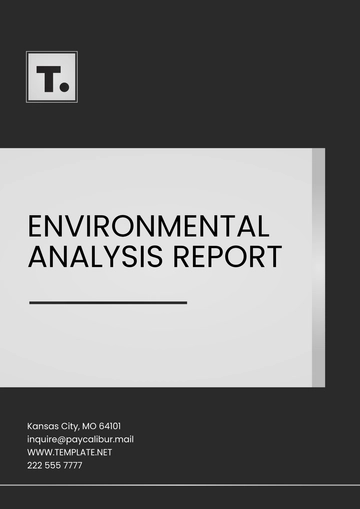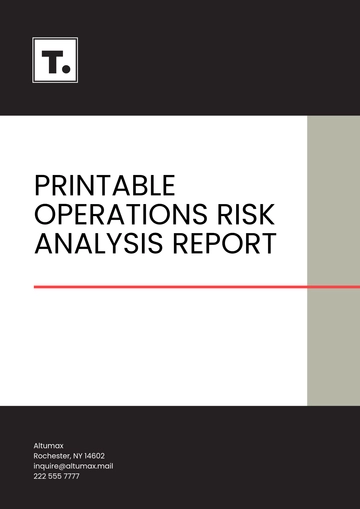Free Investment Analysis
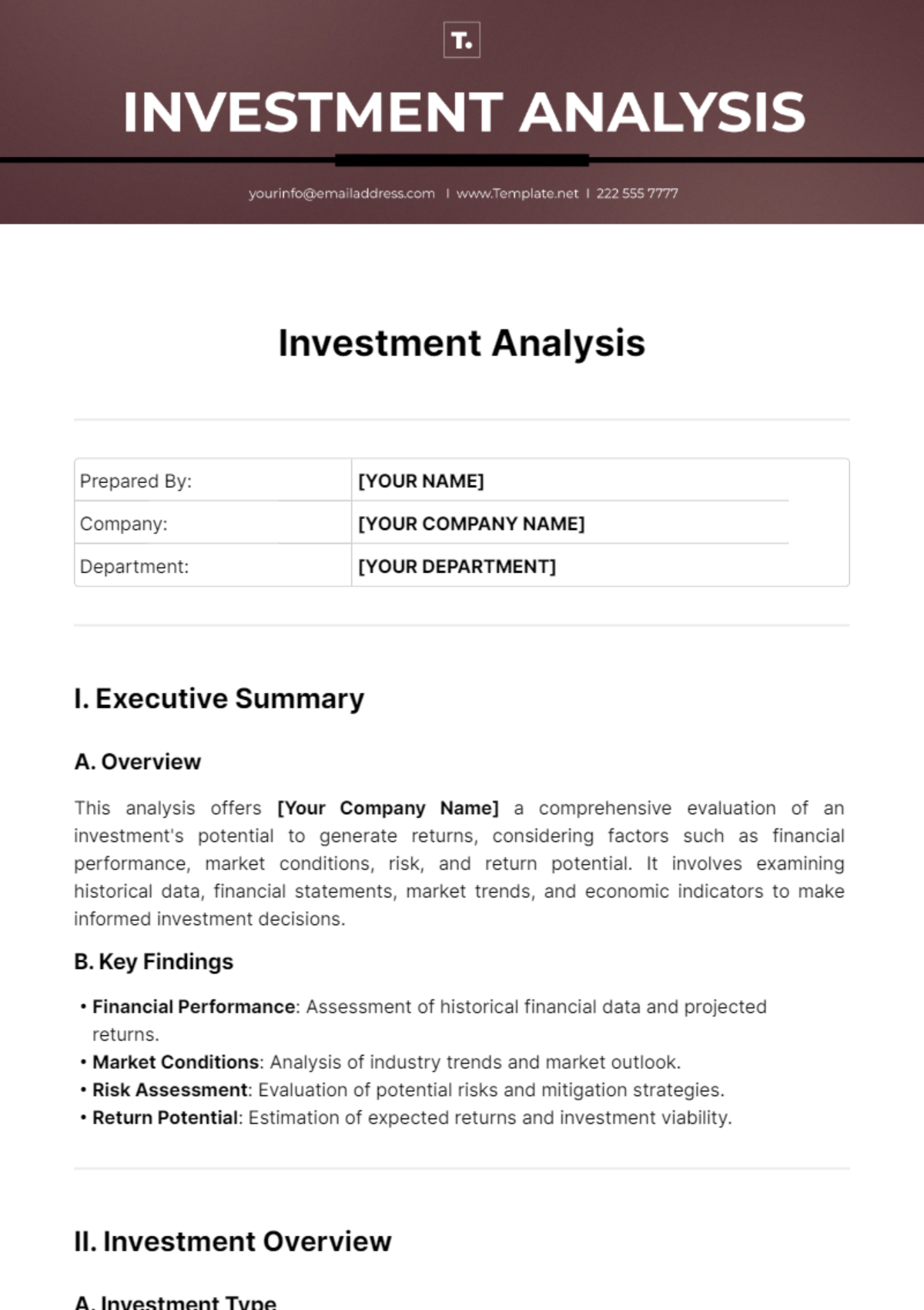
Prepared By: | [YOUR NAME] |
Company: | [YOUR COMPANY NAME] |
Department: | [YOUR DEPARTMENT] |
I. Executive Summary
A. Overview
This analysis offers [Your Company Name] a comprehensive evaluation of an investment's potential to generate returns, considering factors such as financial performance, market conditions, risk, and return potential. It involves examining historical data, financial statements, market trends, and economic indicators to make informed investment decisions.
B. Key Findings
Financial Performance: Assessment of historical financial data and projected returns.
Market Conditions: Analysis of industry trends and market outlook.
Risk Assessment: Evaluation of potential risks and mitigation strategies.
Return Potential: Estimation of expected returns and investment viability.
II. Investment Overview
A. Investment Type
Identification of the type of investment (e.g., stocks, bonds, real estate, etc.).
Description of the investment opportunity and its characteristics.
B. Investment Objectives
Clear definition of investment goals and expected outcomes.
Alignment of investment objectives with overall financial strategy.
III. Financial Performance Analysis
A. Historical Data
Review of historical financial performance, including revenue, expenses, and profitability.
Identification of trends and patterns in financial metrics over time.
B. Projections
Forecasting future financial performance based on historical data and market trends.
Estimation of potential returns and growth prospects.
IV. Market Analysis
A. Industry Trends
Examination of industry-specific trends and growth drivers.
Analysis of market dynamics and competitive landscape.
B. Market Outlook
Evaluation of current market conditions and future projections.
Identification of opportunities and threats in the market environment.
V. Risk Assessment
A. Types of Risk
Identification of various types of risk, including market risk, credit risk, and operational risk.
Assessment of the impact of each risk on investment performance.
B. Mitigation Strategies
Implementation of risk mitigation strategies to minimize potential losses.
Diversification of investment portfolio to spread risk across different assets.
VI. Return Potential
A. Return Metrics
Calculation of key return metrics such as return on investment (ROI) and internal rate of return (IRR).
Comparison of expected returns with benchmark performance indicators.
B. Investment Valuation
Valuation of the investment opportunity using various methods such as discounted cash flow (DCF) analysis and comparable company analysis (CCA).
Determination of fair value and investment attractiveness.
VII. Conclusion
A. Summary
This comprehensive investment evaluation analysis provides [Your Company Name] valuable insights into the potential returns and risks associated with the investment opportunity. By considering financial performance, market conditions, risk factors, and return potential, stakeholders can make informed investment decisions aligned with their objectives.
B. Next Steps
Decision Making: Utilize the analysis findings to make investment decisions.
Monitoring and Review: Continuously monitor investment performance and adjust strategies as needed.
Portfolio Optimization: Consider diversification and rebalancing strategies to optimize the investment portfolio.
- 100% Customizable, free editor
- Access 1 Million+ Templates, photo’s & graphics
- Download or share as a template
- Click and replace photos, graphics, text, backgrounds
- Resize, crop, AI write & more
- Access advanced editor
Unlock smarter investment decisions with the Investment Analysis Template from Template.net. Fully customizable and editable, it offers a streamlined approach to managing investments. Tailor it to your needs with ease, using our AI Editor Tool for seamless adjustments. Elevate your financial strategies with this essential, user-friendly template designed for precision and flexibility.

